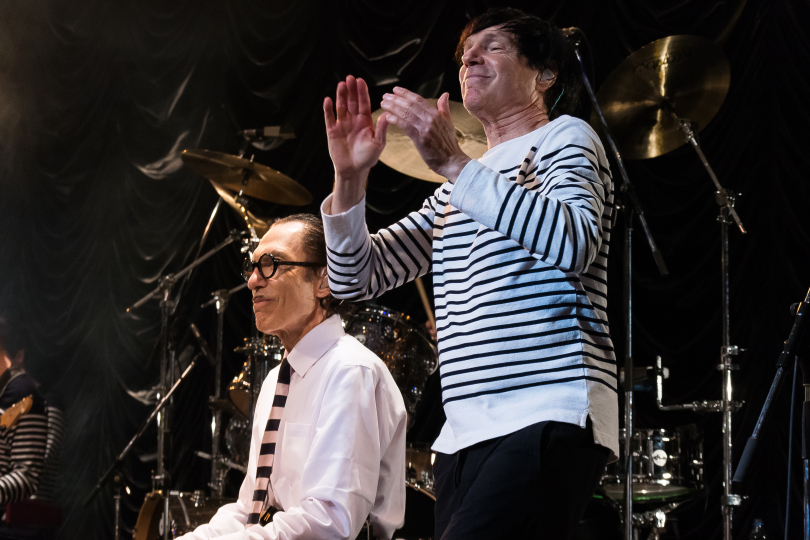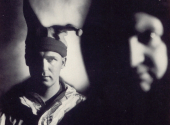
Milestones in Music History #55: Sparks, An Artful Act
After tunnelling into the deepest roots of Brit-pop music and discovering a new genre, skiffle, thanks to Lonnie Donegan, the protagonist of our last episode, we move to the American West Coast in the early 1970s, where a new way of performing and making music was taking its first steps. Something that would disrupt pop, creating a mixture of art and music that had never existed before. We're talking about the legendary Sparks.
To have been born in 1970s Los Angeles, I believe, is the dream of many people who love music, be they musicians or simply avid listeners. To think that concentrated in a relatively small area were the Doors, the Beach Boys (who had been founded in Hawthorne a decade earlier), Love, the Standells and so many others, and it was of course possible to see them all live, is something akin to paradise. A dream, indeed, but also, a curse.
Because for those who grew up among such musical talent and for those who aspired to become musicians, the bar was set very high. But it was worth trying. That's probably what brothers Ron Mael and Russell Mael felt, who at the time were fully immersed in the Los Angeles scene, where the Sunset Strip and the various clubs offered everything that they needed.
But that was not enough, or probably not exactly what they were looking for. The two students – both at UCLA, Ron studied visual arts and film, Russell theatre and film production – devoted themselves to listening to the music that came from the UK at the time, bands like the Kinks, the Who, the Move and Syd Barrett. They disliked folk music, which they considered stale and uninteresting.
From those listening they drew the inspiration and courage necessary to give life to their creation; the duo decided their time had come. And so, the first recordings appeared under the name "Urban Renewal Project" and date back to 1967 but were not published. Their first real debut came a couple of years later, in 1971, with Halfnelson, which was also the new name of the band, but it was eventually re-released one year later as Sparks, and along with it, a final change to the name of the band.
The album was born from the will of producer Todd Rundgren, who had listened to and enjoyed their recordings from a few years earlier and had ensured that the band signed with the Bearsville record label. Although still rudimentary, the album gave a glimpse of some of the band's musical traits. Russell's theatrical and ironic singing marked the territory from here on, accompanied by a mixture of glam rock and psychedelic pop.
The album, however, was not very successful and did not sell as hoped. America probably wasn't ready for Sparks yet. The release of their second work, A Woofer in Tweeter's Clothing, was still of little success in the United States, but they were lucky enough to be able to tour England, especially in London and in trendy venues of the time, such as the Marquee Club.
There they found their purpose; many became fond of the band, and the band reciprocated this love by deciding to move to England. And it was here that the band's career took a major turn: they became popular by playing several concerts and performing on the then-popular BBC Two television program The Old Grey Whistle Test.
Moreover, the band signed a contract with Island Records. Finally came their long-awaited success with the album Kimono My House, reaching number two in the UK charts with the hit "This Town Ain't Big Enough for Both of Us", its opening track. Sparks became very popular in the UK, to the point of appearing several times on Top of the Pops.
But the echoes of Kimono My House had also reached overseas, and so the band returned to America to make themselves better known. That same year, the band also worked on their next studio album, which they released later in 1974, Propaganda, which followed in the footsteps of the previous record: a mixture of power and synth-pop, interspersed with hints of rock and glam rock.
The album contained the beautiful hits "Something for the Girl with Everything" and "Never Turn Your Back on Mother Earth", and although it did not achieve the success of Kimono My House, it had a decent reception. So, they took advantage of the good American wave to stay there a little longer, and there they released their fourth studio album, Indiscreet, produced by the talented producer Tony Visconti.
This record represented a major musical turning point: Indiscreet left glam behind to embrace less rock sounds, but retained the theatricality, and was inspired by sounds from jazz, classical music and vaudeville. Given the good reception overseas, the band decided to return and re-establish themselves in Los Angeles.
Their sound also adapted to the location, becoming somewhat more "American", as demonstrated by the band's next two albums, Big Beat and Introducing Sparks. The West Coast sound could be heard especially in tracks like "Everybody's Stupid" and "Throw Her Away (and Get a New One)". But the band was unrestrained and couldn't settle into a single genre, and little by little they approached the world of electronica.
In particular, they became quite fond of the work of Giorgio Moroder, and through a German journalist, a friend of Moroder, they came into contact. This was a turning point in Sparks' career, as Moroder released their new studio effort, No. 1 in Heaven. The band's sound was completely changed; synths and electronic rhythms reigned supreme.
The album showed how a band could shed and evolve in completely new ways, and showed how talented the Sparks were capable of such change. The two singles taken from the album, "Beat The Clock" and "The Number One Song in Heaven" were enormously successful, and by now the band had entered the Olympus of overseas music.
With the following album in 1980, Terminal Jive, Sparks also secured success in Europe (especially in France) and also in Australia. The synth-pop breakthrough had arrived and Sparks was the pioneer of this path. Their career was followed by many successes and was truly prolific, publishing sixteen albums, the latest released in 2023, entitled The Girl Is Crying in Her Latte.
Sparks showed the world of music the ability to innovate, change, adapt and evolve. But at the same time without denying their nature and their artistic approach. Their musical legacy is immense, and many artists took inspiration from their art. There would be many, but just to name a few, John Frusciante, Faith No More, Björk (who declared that Kimono My House changed her life), Depeche Mode, Joy Division, New Order, Sonic Youth, The Smiths and They Might Be Giants, all pay a debt to Sparks.
A sensational act that made an enormous contribution to the development of synth-pop and artistic expression in music. The same propensity for experimentation was shown by another interesting musical phenomenon at the beginning of the 80s in England, precisely in London: I'm talking about Coil, protagonists of our next episode of Milestones.
How true is the saying "no one is a prophet in his own country" in music? How much is the musician influenced by the place where he lives? Is it possible to distinguish music from the place where it is produced? What other artists nowadays have the same propensity as Sparks to change and rediscover themselves?
Leave your opinion in the comments below!
If you have found an error or typo in the article, please let us know by e-mail info@insounder.org.





